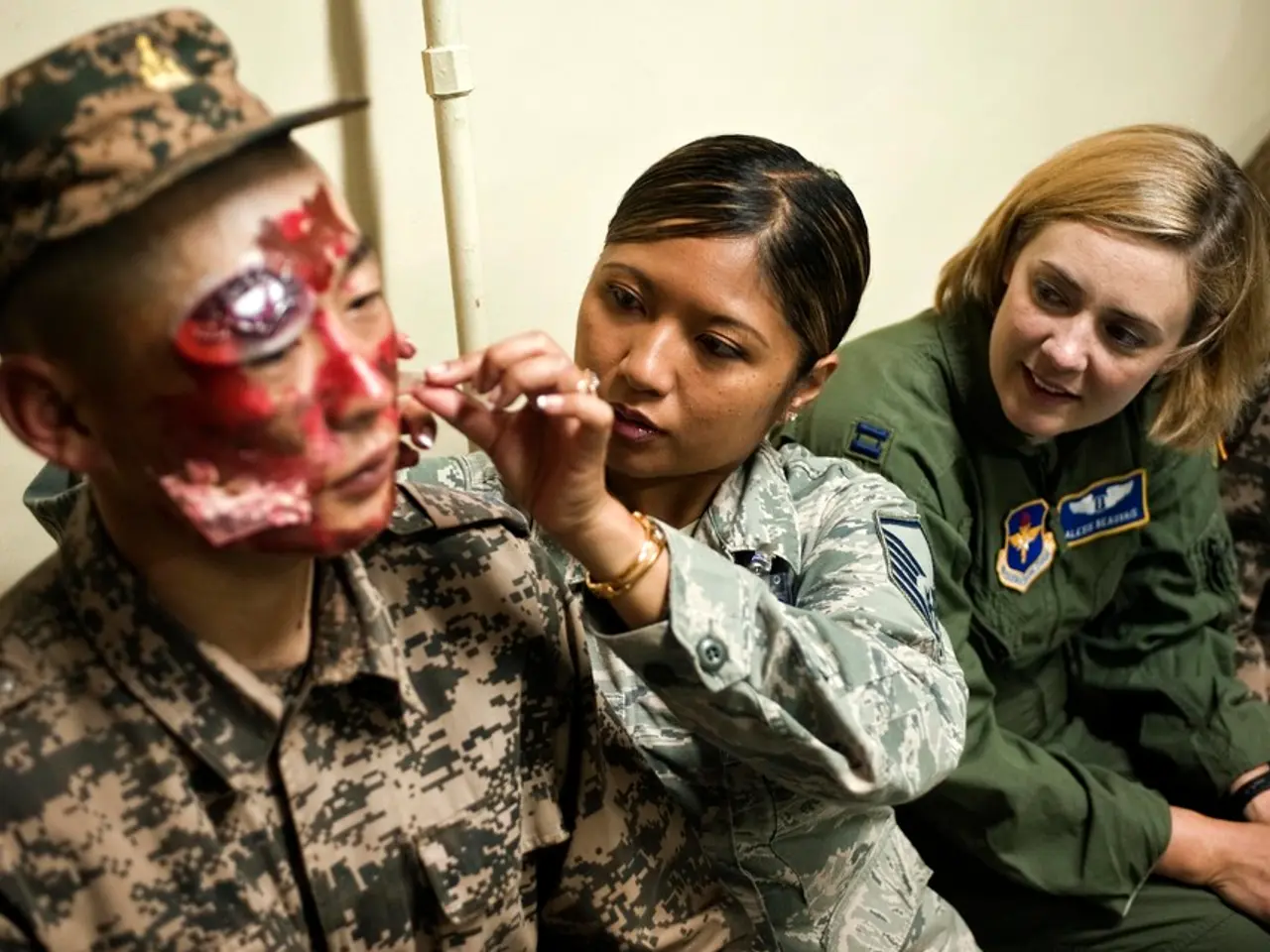Identifying the Need for Sutures: When is Stitching Necessary?
In the event of a deep cut or scrape, it's essential to know when to seek immediate medical attention. Here are some guidelines to help you determine if your injury requires prompt care.
If an adult has not had a tetanus booster shot within the past 10 years, they will need one for a contaminated or dirty wound. This includes cuts caused by animal or human bites, as well as wounds that may have been exposed to dirt or debris.
Cuts on or near the genitalia, cosmetically significant areas like the face, hands, feet, joints, or those that are gaping open and cannot be pressed together with gentle pressure, should be evaluated by an emergency department. Cuts that are bleeding profusely and whose flow does not slow should also be evaluated by an emergency department.
A deep cut that exposes the dermis or yellow subcutaneous fatty tissue requires a visit to an emergency department or urgent care center. After getting stitches, keep the area clean and dry for about 48 hours. Afterward, gently clean the area with cool water and soap, use a clean paper towel to dry, replace bandages daily, and apply antibiotic treatment if needed. The physician will advise when to remove stitches depending on the location and kind of suture material used.
It's important to avoid using hydrogen peroxide for wound cleaning as it damages tissue. In case of stitches, avoid giving an injured child anything to eat or drink before going to the ER.
If you notice signs of infection such as redness, swelling, warmth, pus, red streaks spreading from the wound, or fever, seek immediate medical attention. You should also seek medical care if your stitches come apart or blood soaks through your bandages.
Those with underlying conditions like diabetes, a weakened immune system, poor circulation, or use blood thinners should also be cautious, as these factors can affect healing or bleeding.
For a minor cut or scrape, irrigate it, apply a topical antibiotic, and use a bandage. Keep the area clean and reapply antibiotic ointment and a bandage several times a day at home. Before visiting the emergency department, use tap water and a dilute liquid antibacterial soap to gently clean the injured area.
In case of bites or dirty wounds, special treatment may be required. On the way to the hospital or clinic, apply direct pressure and elevate the injured area to slow or stop bleeding.
Prompt medical care can prevent infection and complications, ensure proper wound closure, and reduce scarring. If bleeding persists despite first aid, or if the injury meets any of these criteria, seek emergency medical evaluation promptly.
[1] Mayo Clinic. First aid: Caring for a cut or scrape. https://www.mayoclinic.org/first-aid/first-aid-caring-for-a-cut-or-scrape/basics/art-20056741
[2] American Academy of Pediatrics. Caring for cuts and scrapes. https://www.healthychildren.org/English/healthy-living/emotional-wellness/Pages/Caring-for-Cuts-and-Scrapes.aspx
[3] NHS UK. Cuts and grazes. https://www.nhs.uk/conditions/cuts-and-grazes/
[4] American College of Emergency Physicians. When to go to the ER. https://www.acep.org/public/when-to-go-to-the-er/
[5] Centers for Disease Control and Prevention. Tetanus. https://www.cdc.gov/tetanus/index.html
- Maintaining good health and workplace-wellness can be boosted by incorporating regular fitness-and-exercise, mental-health practices, and adhering to skin-care routines.
- As part of a comprehensive health-and-wellness plan, incorporating CBD into therapies-and-treatments may provide potential benefits for mental health and physical fitness.
- For individuals with underlying health conditions like diabetes or a weakened immune system, it's crucial to adopt healthier eating habits, prioritize regular medical check-ups, and prioritize self-care in the realm of health-and-wellness.
- In the interest of promoting overall health-and-wellness, alcohol consumption and tobacco usage should be minimized and balanced with nutritious food choices, daily exercise, and regular screenings for early detection and treatment of potential health issues.
- As part of a wholistic approach to health-and-wellness, seeking guidance from healthcare professionals is essential to determine the best treatments for specific health concerns, as well as obtaining information on proper wound care, such as monitoring for signs of infection from a cut or scrape.




